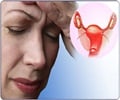E3 estrogen could stimulate onset of labour, say Australian researchers. The discovery could help prevent premature births.
E3 estrogen could stimulate onset of labour, say Australian researchers. The discovery could help prevent premature births.
"The trigger for the onset of labor in women has been a puzzle for a long time," says Dr. Roger Smith, MD, PhD, of John Hunter Hospital in Newcastle, Australia and lead author of the study. "Our findings show we may have an answer, and furthermore may be able to delay or advance labor."The study has been accepted for publication in The Endocrine Society's Journal of Clinical Endocrinology & Metabolism (JCEM).
Humans have two types of estrogen called estradiol (E2) and estriol (E3). When E2 and E3 are in roughly equal amounts there is no drive to labor, but the opposite holds true once one becomes in greater excess than the other. This study evaluated the ratio of E3 to E2 in 500 pregnant women and found that it went up rapidly as labor approached indicating that E3 could stimulate the onset of labor.
Dr. Smith and his colleagues then sought to understand what was causing the increase in E3 and they believe they found an answer. In a previous study they showed that a hormone in the placenta, called corticotrophin-releasing hormone (CRH), rises rapidly through pregnancy, peaking at the time of labor. CRH levels rise earlier in women who deliver prematurely and later in women who deliver late, forming a biological clock that regulates the length of pregnancy.
Researchers also showed that CRH can act on the adrenal glands of the fetus to stimulate the production of a steroid hormone which the placenta uses to make E3. This study showed a strong relationship between CRH levels in the mother's blood in the weeks before birth and the levels of E3 supporting the view that CRH increases E3.
"CRH may be the catalyst for the onset of labor, by driving steroid hormone production in the fetus, which then leads to an increase in E3 so that it exceeds E2," said Dr. Smith. "If this progression is correct, it may explain why women with a baby who dies in utero can still go into labor. In this scenario, levels of E3 would drop making E2 more dominant and triggering the onset of labor."
Advertisement
Dr. Smith notes that this is the first study to show these results and confirmation through further research is needed.
Advertisement
GPL/L













